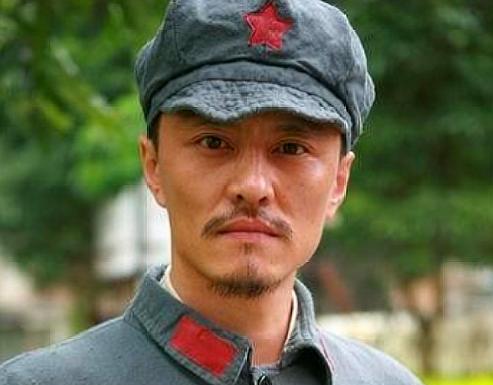In September 1933, Lao Jiang mobilized 1 million troops to launch the fifth "encirclement and suppression" campaign against the Central Soviet Region. At the same time as the military offensive, Lao Chiang also used money and high-ranking officials Houlu to lure the weak-willed people in the Red Army to defect and surrender. On July 25, 1934, Kong Hepet, then commander-in-chief of the General Headquarters of the Egan Border Military Region and commander of the Red Sixteenth Army, defected to the enemy, and the old Chiang Kai-shek was overjoyed by this, calling it "the precursor to the collapse of the Red Army."

Shortly after Kong Hepet defected and surrendered to the enemy, Song Qingquan, commander of the Fujian-Gansu Military Region; Chen Hongshi, secretary of the Xianggan Provincial CPC Committee and political commissar of the Xianggan-Gansu Military Region; Zeng Hongyi, secretary of the Fujian-Zhejiang-Gansu Provincial CPC Committee and commander of the Fujian-Zhejiang-Gansu Military Region; Peng You, director of the Political Department of the Fujian-Gansu Military Region; and Ni Baoshu, deputy commander of the New Red Tenth Army, also defected one after another. Among these traitors, one of them was known as the "First Rebel General of the Red Army" because he had held many important positions in the Red Army, and this person was Gong Chu.
Gong Chu is a native of Lechang, Guangdong, born in 1901. After graduating from high school, he threw pens from Rong to become a soldier in the Guangdong Army and served as a company commander. Later, Gong Chu was influenced by the revolutionary trend, joined our party, and participated in the Nanchang Uprising, serving as the instructor of the 3rd Battalion of the 6th Regiment of the 3rd Division of the 20th Army. After the Nanchang Uprising, Gong Chu followed Zhu Laozong to Jinggangshan and served as a party representative of the 29th Regiment of the 10th Division of the Red Fourth Army, and also a standing committee member of the former committee of the Red 4th Army.
Shortly thereafter, Gong Chu was ordered to go to Shonan to carry out his work, serving as a member of the Guangxi Former Committee and participating in the famous Baise Uprising. After the success of the uprising, he served as the chief of staff of the Red 7 Army and the commander of the 19th Division, and later the Red 7 Army entered Jinggangshan, and Gong Chu was further reused, successively serving as the commander of the Guangdong-Gansu Military Region, the acting chief of staff of the Red Army, and the chief of staff of the Central Military Region, becoming an important senior general in the Red Army. After the defeat of the fifth anti-"encirclement and suppression" campaign, Gong Chu was appointed commander-in-chief of the Red Army in the Xiang, Guangdong, and Guizhou border areas, and was ordered to go to Shonan to carry out guerrilla warfare.
At this time, the main force of the Red Army had already marched, and Old Chiang Kai-shek divided the Nationalist army into two, part of which "pursued and suppressed" the Central Red Army, and part of which continued to attack the Soviet zone. Faced with the grim revolutionary situation, Gong Chu felt that the future was uncertain, he had lost confidence in the revolution, and coupled with the entrapment of the Kuomintang, he decided to defect to the enemy. On May 2, 1935, Gong Chu led a company to Huangmao Village in Chenxian County, and in the middle of the night, he fled Huangmao Village and defected to Yu Hanmou while the guards were asleep. Because he held a high position in the Red Army, he was known as the "First Rebel General of the Red Army".
After Gong Chu defected, in order to ask the Kuomintang for credit, he killed his former comrades-in-arms. On October 13, Gong Chu led more than 30 Kuomintang troops, disguised as Red Army guerrillas, first fought with the bandit Zhou Wenshanbu for a while, and then pretended to be the Xiangnan Red Army to find a local organization. He Minxue, commander of the Beishan guerrilla brigade, heard that the old commander Gong Chu had come, and quickly sent someone to contact him. In the name of a meeting, Gong Chu lured the Beishan guerrillas into a well-set ambush circle and coerced the guerrillas to surrender. He Minxue led his troops to resist, and with the exception of a few breakthroughs, more than 50 people died heroically. Because Gong Chu held a high-ranking position in our army and was extremely familiar with our army's tactical playing style, it caused great difficulties and losses to the Red Army that remained in the south. On the eve of the founding of New China, Gong Chu fled to Hong Kong, where he stayed for 40 years, during which he went to the United States and took a "green card", but returned to Hong Kong shortly after due to language barriers and other reasons. In September 1990, Gong Chu, who was nearly 90 years old, returned to his hometown to settle down, and died five years later, living for 95 years.